Let me just start by saying, it doesn’t matter which way you look at the Sony A7Rii, it is a ridiculous thing. Ridiculous in every sense. If you view it as bad, it’s ridiculously bad, yet entirely simultaneously it can be viewed as ridiculously good! I know this for a fact, since I myself have both views depending on the day you ask me. In the extremes, the Sony A7Rii is a camera I love to hate and hate to love, and through this relationship with it, it manages to perfectly illustrate the worst of the problems I have with modern digital cameras… So I thought I’d write my sort of Sony A7rii review…
Actually, this isn’t the only reason I wanted to write about it. If you pay close attention you will have noticed that photos taken with these Sony A7 series cameras have recently sneaked their way into posts on 35mmc. I posted a few in my Jupiter-3 post, there’s even a picture of one of them in the post about the Yashica lens mod… And this next photo was taken – for fun – with a Sony A7rii. A rare occurrence, let me tell you!
This has all happened for a few reasons really. Prior to getting my M9 I kept getting asked to include a few digital results in reviews. I decided it couldn’t hurt – so one of the full frame Sony’s seemed like the logical choice. It’s also happened because of the previous interest in lens adapting and modification rearing its head through my playing with various compact camera lenses. Not to mention the fact that actually, I use them to take most of the gear photos that accompany the posts write on here. To be fair, they’re also compact and 35mm format too, so in some ways maybe they deserve a place… maybe… …
One way or another – however I try and justify it – the Sony A7Rii has pushed its way into this blog, and really this probably just comes down to the fact that it’s a big part of my photography life. It is after my main works-camera; the work horse of my photography and video company. It’s possibly even the camera I take most photos with. As such, I know it fairly well, and me being me, this also means I have quite strong opinions about it!
Sony and me
The Sony A7Rii is one of 6 cameras that Sony has released in roughly this form factor in the last 4 and a half minutes – or at least that’s how it seems. In reality it’s probably been about 4-5 years since the original A7 hit the market. I’ve so far owned half of these cameras. I had the A7R first, then the A7S, and now the A7Rii. The first two replaced my Nikon D800 which was the last Nikon in a long line of DSLRs I’d owned dating back to when I bought my D70s when it first hit the market. The original Sony A7R was built around the same sensor as the Nikon D800, so when one replaced the other, I thought the step would be easy. I was very wrong! The Nikon functioned properly as a mature professional product. As a first generation product the A7R had some significant limitations. In fact, I later sold the A7R after I became so frustrated with the autofocus that I felt sure I would smash it.
In fact on one occasion I did smash it… but that was down to its flimsy build quality and an accident in the studio, and not my frustrating experiences. (Pro tip, it’s good to have good insurance if you shoot with Sony cameras professionally!) I digress. One way or another, my Sony A7R was eventually replaced with a Sony A7Rii resulting in this being my main works-camera with the Sony A7S as a backup.
Thankfully Sony thought it wise to implement autofocus that actually functions into both of these cameras. In fact, it actually works so well now that I haven’t dreamed of throwing either of them out of the window for autofocus issues, even once… But this doesn’t mean I don’t think about replacing them…
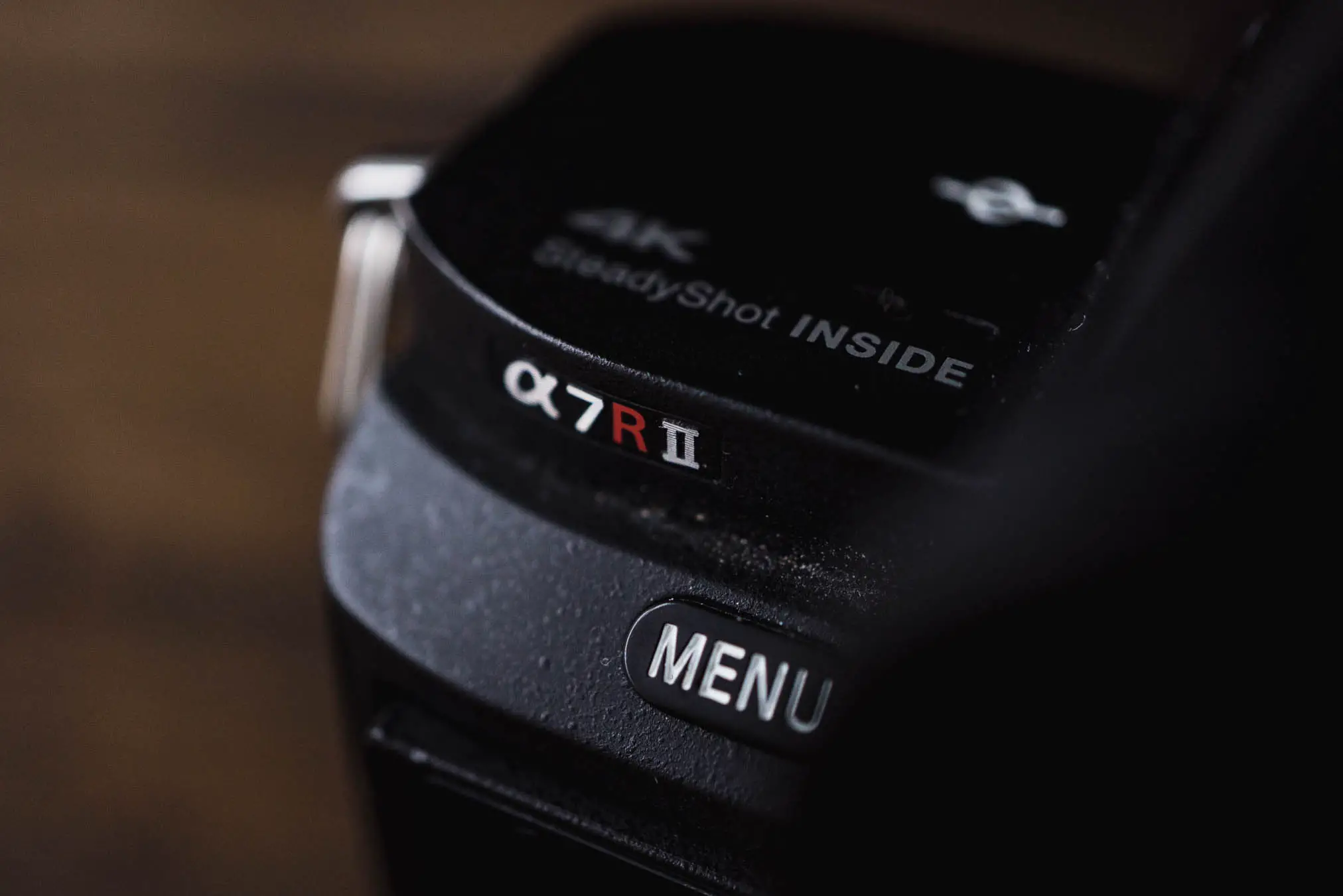
Terminally replaceable
The issue is – even before you take into account how they function and perform – with Sony replacing these cameras every few years with new better models, I feel driven to replace them every few years. This has the unfortunate impact of them feeling almost disposable. As such I don’t find myself bonding with them as tools in the way I do with my Leicas, or indeed as I did with my Nikons before. Now you might ask why I am so driven to replace them so frequently? Well, sometimes I ask myself the same question, but actually I find myself having some surprisingly sensible answers that are largely to do with the nature of the Sony system.
A young system
As alluded to, the system itself is still very young. It’s not like the Nikon or Canon systems of SLR’s where advancements amount to little more than minor refinements. The difference between the first gen Sony A7R and second-gen Sony A7Rii is stunning. The original had the aforementioned impossibly slow autofocus, but there were plenty of other problems ranging from significant to the seemingly quite odd. Even the A7R shutter button felt like it was in the wrong place! It’s safe to say, the A7Rii solved a good chunk of issues in the upgrade from its predecessor. As such, as a user of this system, seeing such significant upgrades happening, just makes me wonder just what the A7Riii will bring?
Never ending upgrades
This is the question that pretty much summarises everything I dislike about the digital photography industry. The never ending upgrade path is enough to drive me to distraction! But unlike with Nikon where I became quite pragmatic about it and shot with cameras for much longer, Sony have me trapped in this idea that 2 years is plenty long enough to own a digital camera.
What’s most frustrating for me is the reason I feel so caught up in this frame of mind. I’m no longer after better image quality, I’m not after higher numbers of pixels, ISOs or even focusing speed anymore. I literally can’t think of anything else Sony could bring in those “bigger” or “faster” stakes, the A7Rii has all those things pretty much nailed. All I want from the next generation of Sony is for it to be a better camera.
When I say “camera” here, the distinction I want to make is that I don’t want another “gadget” like the one I hold before me today. Possibly slightly unrealistically, I want the camera that my old Nikon D3 was, with the size of the A7Rii. Not knowing if that what’s next from Sony, or if there will be at least a good sized step in that direction just keeps me waiting for the upgrade… Which frankly, is just not the way I like to live my life!
The issue is – whether I like it or not – having sold my Nikon’s and committed to the Sony system I’m not about to take a step backwards. I’m sold on the theory of a mirrorless camera, now I just need the reality to catch up with my practical needs. Until then, there’s no escaping from the fact that my main works camera is the Sony A7Rii, and really as I mentioned at the beginning of the post, I don’t think I could possibly be any more torn about how I feel about it!
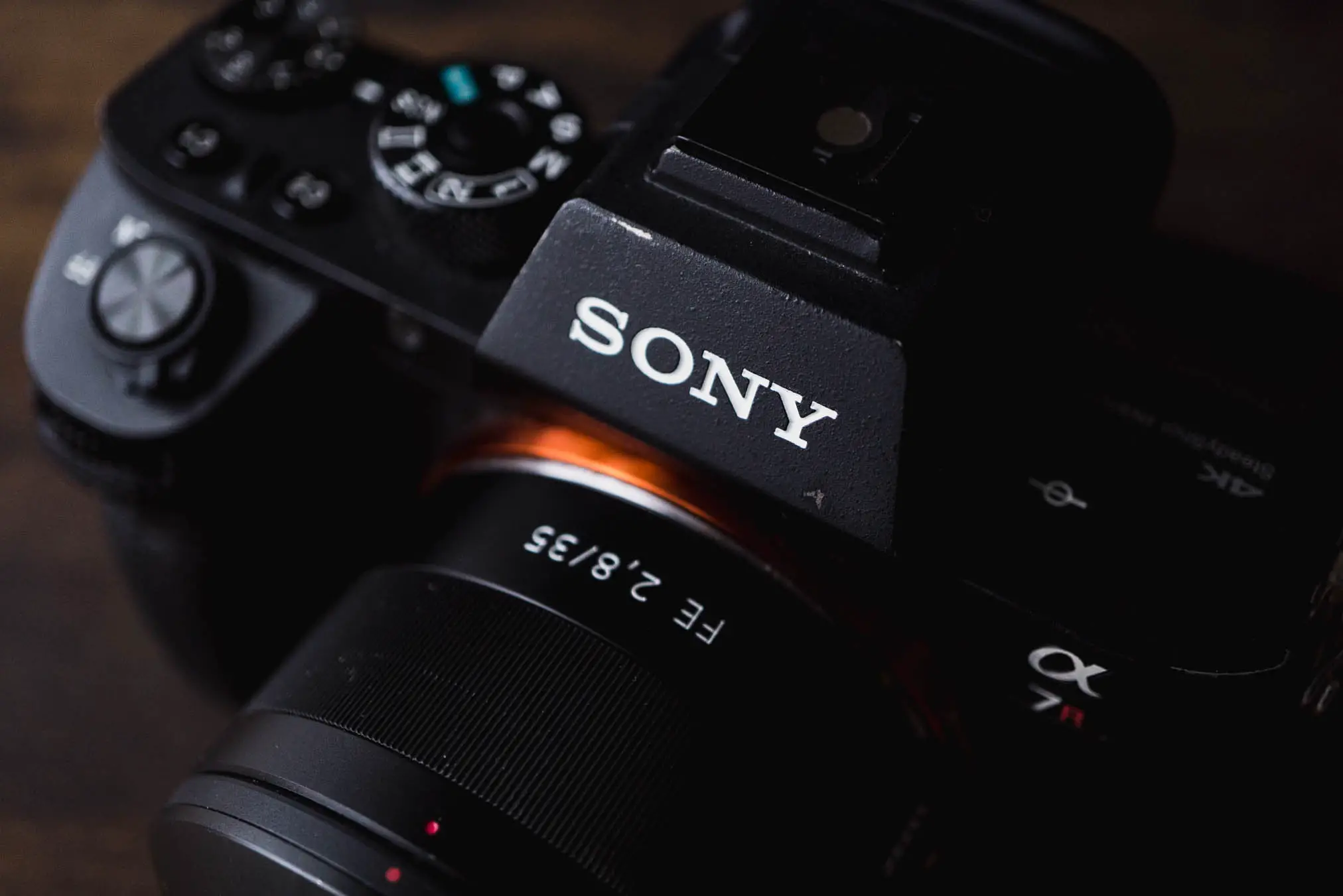
The Sony A7rii Review
The Sony A7rii is a full frame 42 megapixel compact mirrorless interchangeable lens camera. It has a BSI sensor, which as far as I know is the first of its type in this size of camera/sensor. BSI stands for back side illuminated (which is funny if you’re English and have a puerile sense of humour). What exactly this means I don’t [care to] know, but what I do know is that it’s technology originally used in small sensor cameras to increase the low light/high ISO capability alongside increased pixel counts. Scale that technology up – as has been in the A7rii – and you find yourself with a large sensor, a very large pixel count and – thanks to the backside illumination – very low noise even at fairly substantial ISOs.
Additionally to this, there’s also very good phase detection AF (the lack of which made its predecessor slow), 5 axis image stabilisation, 14bit raw processing and it does in camera 4K video to boot. If you don’t know what much of these numbers and phrases means, it doesn’t matter. All you need to know is that this all adds up to a device that has stunning output potential. In fact in real terms, the output is so good that it completely outperforms my needs. To the extent in fact that – when combined with the way the Sony A7rii is designed – it makes me feel like a lazy photographer.
Absurd high ISO performance
The cornerstone technical feature in the lazy approach that the Sony A7Rii’s instils in me is the aforementioned high ISO/low light capabilities. I really can’t emphasise enough how absurd the high ISO performance of this camera is; it can be used almost without concern for the ISO it’s set to. It’s no exaggeration to say that I’ve delivered photos to clients that were taken at 12,800 ISO, and comfortably too. What’s interesting about the high ISO output of this camera is that thanks to its extraordinary pixel count, what noise there is seems relatively hidden in the tiny pixels. There is noise there, but you have to zoom in so much to see it, it’s hardly visible when viewed as a full image.
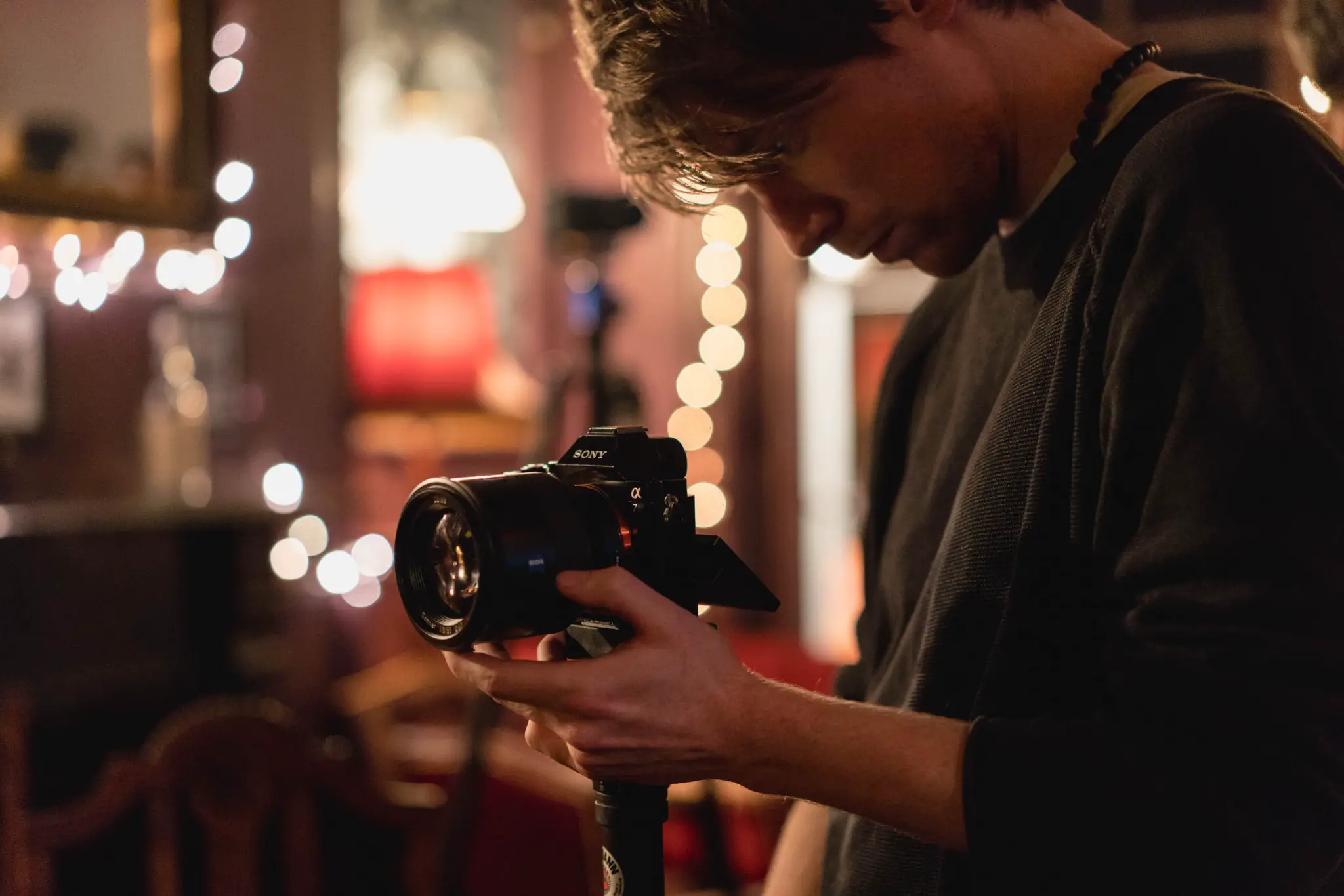
As a professional with clients to satisfy, I won’t deny that this does bring some significant advantage. For example, I’ve made dimly lit wedding venues look reasonably bright, without needing to worry about flash. This pains me a little bit, as the results tend to be those taken in rooms where the light is poor and lacks contrast, resulting in images that I just wouldn’t take within my hobby.
Unfortunately, the world has turned to a point where people still want weddings in fancy hotels with terrible lighting, but at the same time also want discrete reportage photography with coverage all day. Given these shooting circumstances, I just find it hard to argue that shooting 3200iso at f/1.4 is a better option than f/2.8 and 12,800iso.
When the goal is taking a photo of a slightly drunk uncle Steve making inappropriate jokes after a few to many pints of Boddington’s, does a hair’s breadth of depth of field make a more interesting photo, or does capturing a bit more focus of the face of Auntie Sarah who’s evil-eyeing Steve from over his shoulder? In the world of documentary wedding photography, the answer is almost always the latter!
That being said, once you’ve extrapolated that specific advantage across the very-few-other situations I might find within the realms of my pro career, I personally struggle to find much real world else use for very high ISO shooting.
Lazy ISO-less auto shooting
That is of course apart from where it comes to the laziness I mentioned. Some people call cameras like these ISO-less. What’s meant by this is that to all intents and purposes they can be shot at a broad range of ISOs with little impact on the results. I mentioned that there’s an impact on the images, but that it’s only really visible when you zoom right in. This is especially significant to me as a professional photographer as it means that really any impact to the files is only evident to me in my post process. Broadly speaking, clients don’t zoom in on images, and even if they do, a lot of the time the images they receive are downscaled meaning that they can’t zoom in so much as to be able to see it anyway.
The result of this is that the auto-ISO function of the camera becomes a huge crutch. When I’m on a shoot I’ve got to a stage with the Sony A7rii that I just feel like I can let it do its thing. Quite often I just set it to auto ISO and aperture priority, set it so it doesn’t use a shutter speed less the 1/125th of a second or an ISO higher than 12,800, and just take photos with little concern for what ISO it’s choosing.
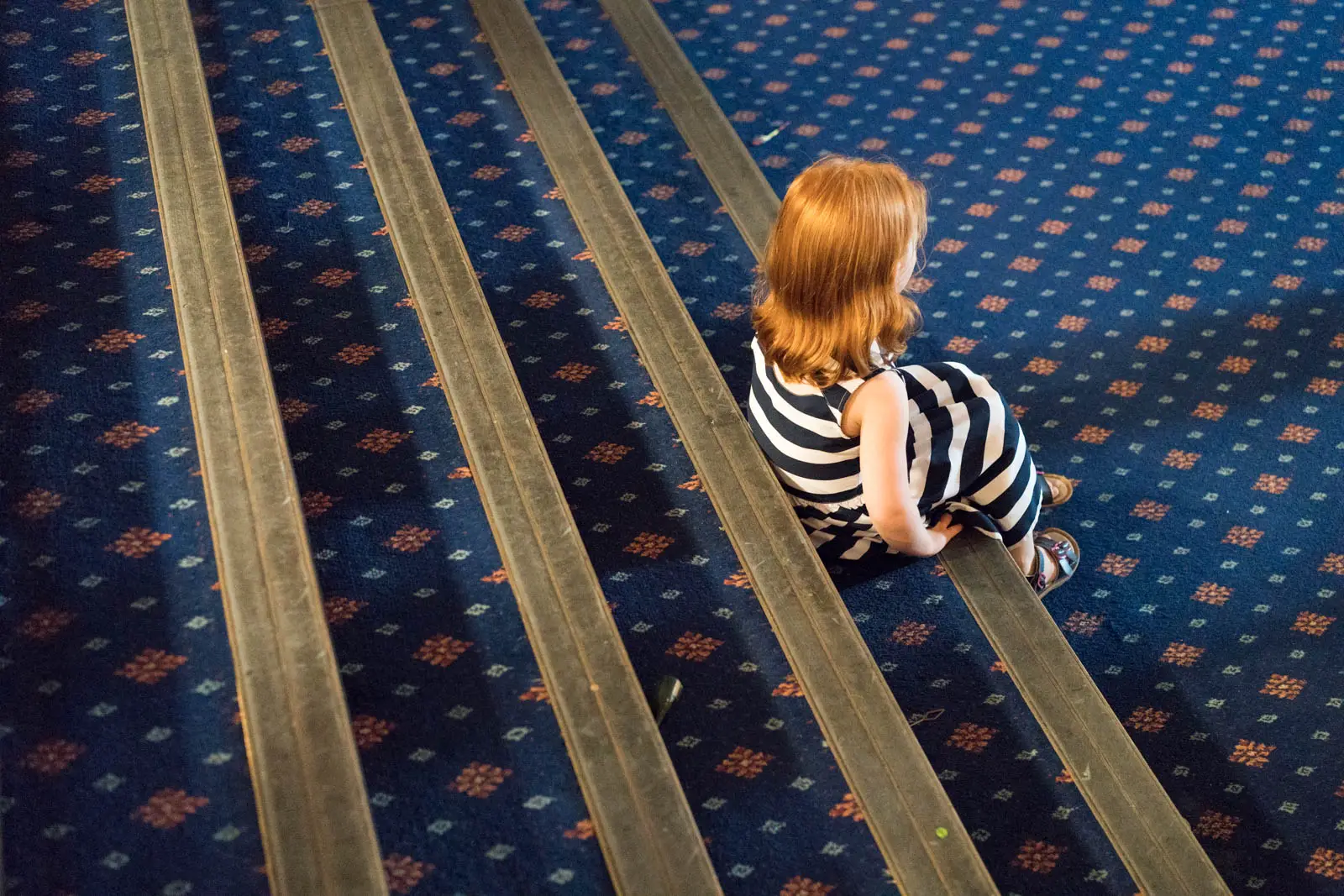
The viewfinder; and making a good exposure
This is all further aided by the fact that it has an extremely good digital viewfinder. When you put the Sony A7Rii to your eye, there is little sense of a disconnect from reality as there used to be with digital viewfinders. In fact, since the viewfinder is such high quality, and yet is still digital, it brings about with it the distinct advantage of you being able to accurately see the exposure you’re about to take. If what you see is not what you want, more importantly, you’re able to quickly act on the information before you press the button.
With all the automatic functions working, acting on the exposure info in the viewfinder comes down to using the exposure compensation dial that sits conveniently under your right thumb. This means that even in pretty difficult lighting situations, a near fully automatic shooting camera can really easily be manipulated into taking the exact exposure you want very quickly and easily. This is so much the case, that I even find myself looking at the screen on the back after I’ve taken a photo less with the Sony A7rii than I did my DSLRs.
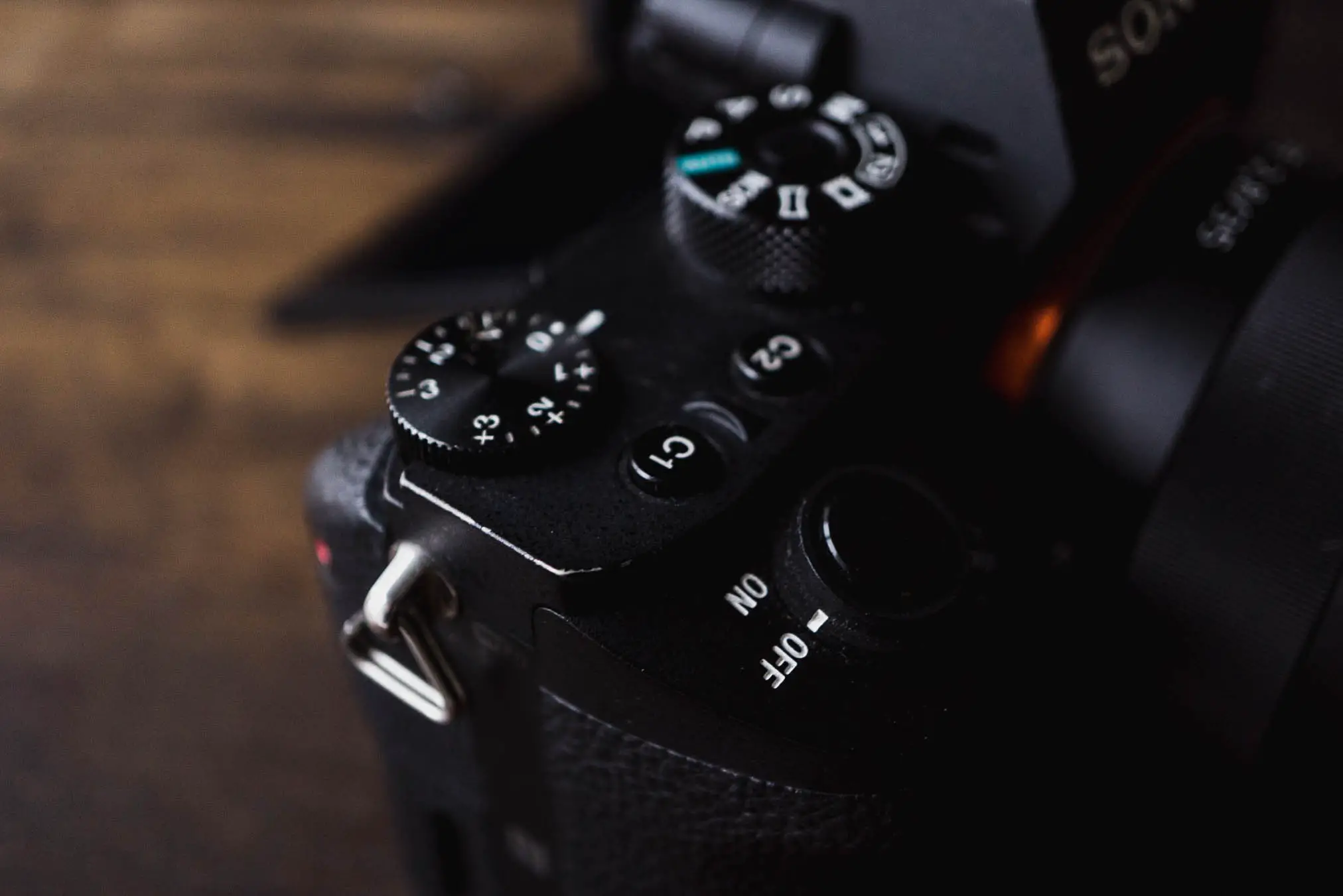
Manoeuvrable raw files
What makes all this even more crackers is that even if you do over or underexpose, there’s so much room for manoeuvre in the raw files that it hardly matters. Admittedly, with how fool proof the automatic exposure system is when combined with the exposure compensation dial, it’s hard to imagine getting an exposure wrong. Of course, in reality, difficult lighting is difficult lighting, and snap judgements about what to expose for aren’t always going to be correct. With the A7Rii though you can err so much toward retaining highlights that areas of an image can be very dark and still be readily recoverable. As with any camera, it’s good to practice to find that line where the noise becomes too intrusive for your tastes, but I’ve found shooting the Sony A7Rii remarkable in this regard. It certainly makes exposure a less worrisome process.
Massive resolution
Another massive crutch is the absurd resolution of the thing. 42mp is such high out-of-camera resolution that it sometimes feels like it’s nudging me to not really work all that hard even when it comes to framing. After all, if I don’t like the framing of a photo I take, I can just crop it to something I do like.
When I first starting shooting digital as a pro, one of my cameras – the Fuji S5 pro – was six megapixels. Six! Nobody complained about file sizes then, and nobody would now. My backup Sony A7S is only 12mp, and that never gets noticed as a limitation either. As a pro I’m hardly ever (read never) shooting for massive end physical image size, and even if I was it would be very rare that I couldn’t get away with delivering a 2000 x 3000px image.
Awesome lenses
This high camera resolution and ability to crop is also aided by modern lenses. Lenses these days are very sharp, but moreover, they’re sharper at longer distances at wider apertures. Even within the length of my photography career, I’ve seen big advancements in the objective quality of lenses available for 35mm size format camera. With my Nikon d800 and 50mm f/1.4 afs – a relatively new lens – I had issues. It was fine closer up, even wide open, but at a distance at the same apertures, the results just weren’t sharp – certainly not sharp enough to make use of the Nikon’s 36mp high resolution for cropping. Since then the likes of Zeiss and Sigma have upped the anti. Toward the end of my time with the Nikon system I had a Sigma 50mm Art which was an incredible lens. And equally with the Sony/Zeiss 55mm f/1.8 I’m never let down when it comes to the resolving power at my fingertips. Combined with the camera, this just gives me even more headroom for cropping.
Awesome, but unrewarding
This all makes for a camera that sounds amazing I know. But, as I’ve alluded to, in use I just can’t get away from how lazy and cack-handed it makes me feel. The issue is, when I shoot with the Sony A7rii I just don’t feel like I’m doing my job properly. This might all sound like I don’t care about my work, or don’t take pride in what I deliver to clients. But this simply isn’t the case. The reality is – as mentioned – the Sony A7rii simply far outperforms my requirements, and indeed the requirements of my clients.
In the world I work in, when I’m taking photos that will mostly be resized down to 1600px on the long edge for use on websites, or at most be used for a full page advert in a magazine where the aforementioned 3000 x 2000px is more than enough, even within the realms of this lazy approach, 99% of the time I’m actually way over-delivering on what I produce.
As a generalist, I produce product shots, photos of building and vehicles, LinkedIn profile head shots, PR and press photography, photos of events etc (you can see all the stuff me and my team shoot here) all to a technical standard that is higher than the expectations of the client. The Sony A7Rii makes this easier to achieve than any other camera in my photography career, but it does so in a way that feels like I’m being lazy. This laziness within the methods with which I shoot it somehow leaves me feeling a little hollow, unsatisfied, and almost like I have cheated my way to the end result. The quality-headroom combined with the level of automation on offer just makes life too easy.
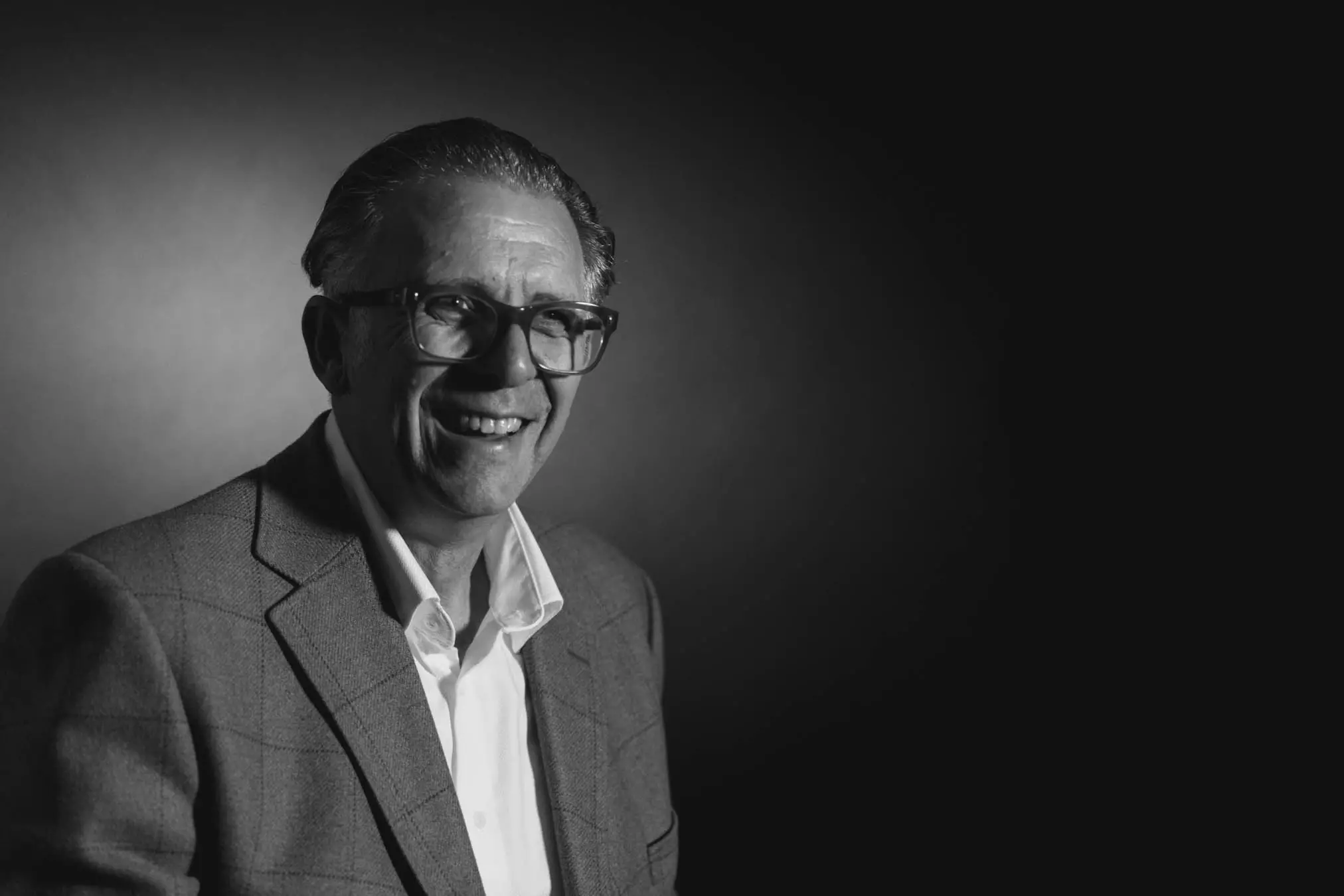
So use the camera properly then!
I’m sure to many his sounds like a completely ridiculous thing to moan about? For one, having a tool that allows one to complete a task in an easier way surely shouldn’t be quibbled at? And really if I have a problem with all the automation then why don’t I just shoot the camera in a more manual way?
Well of course, I could shoot it in a more manual way, perhaps I could set the Sony A7rii properly for each shooting environment as I do with my Leica M9 or any of my manual film cameras. It could even be argued that since the camera allows the room for error that it does, taking a more manual approach might give me back the satisfaction I require, but yet be less risky than if I were to use a less technically good camera. All of this is I suppose true…
A professional (/expert) camera?
…The problem is, using the Sony A7rii as a professional camera feels a lot harder than using it how I do, and not harder in a way that makes it more rewarding, harder in a way that just leaves me frustrated and a little confused. Unfortunately, it doesn’t matter how I use it, this camera just doesn’t feel to me like it’s designed to be used as professional camera. Trying to use it as one feels like your fighting against a very strong tide of automation and superfluous features – some of which I will come back to in a moment. All this superfluous function is born out of the fact that where it’s not designed just for the professional, it’s actually a camera that’s designed to be all things to all photographers. To a greater or lesser extent, this feels a little like it begins with the lowest common denominator.
A Dad camera?
Unfortunately, at its core, the Sony A7Rii is a bit of a feature packed Dad cam! Conceptually, I explained what I think a Dad cam is in this post about a 90’s Samsung, but in brief, it’s a camera designed to appeal to the “Dad”. As I explain in that post, the Dad is the show-off guy who wants something that’s the best, but because he has no knowledge of a subject, can only guess what best by what has the highest value and highest levels of functionality, including of course lots of auto modes. In the case of the £3000 all singing, all dancing Sony A7Rii, this is visible in the vast swathes of automation built into it and the fact that is does pretty much everything(!!) you could imagine a camera doing.
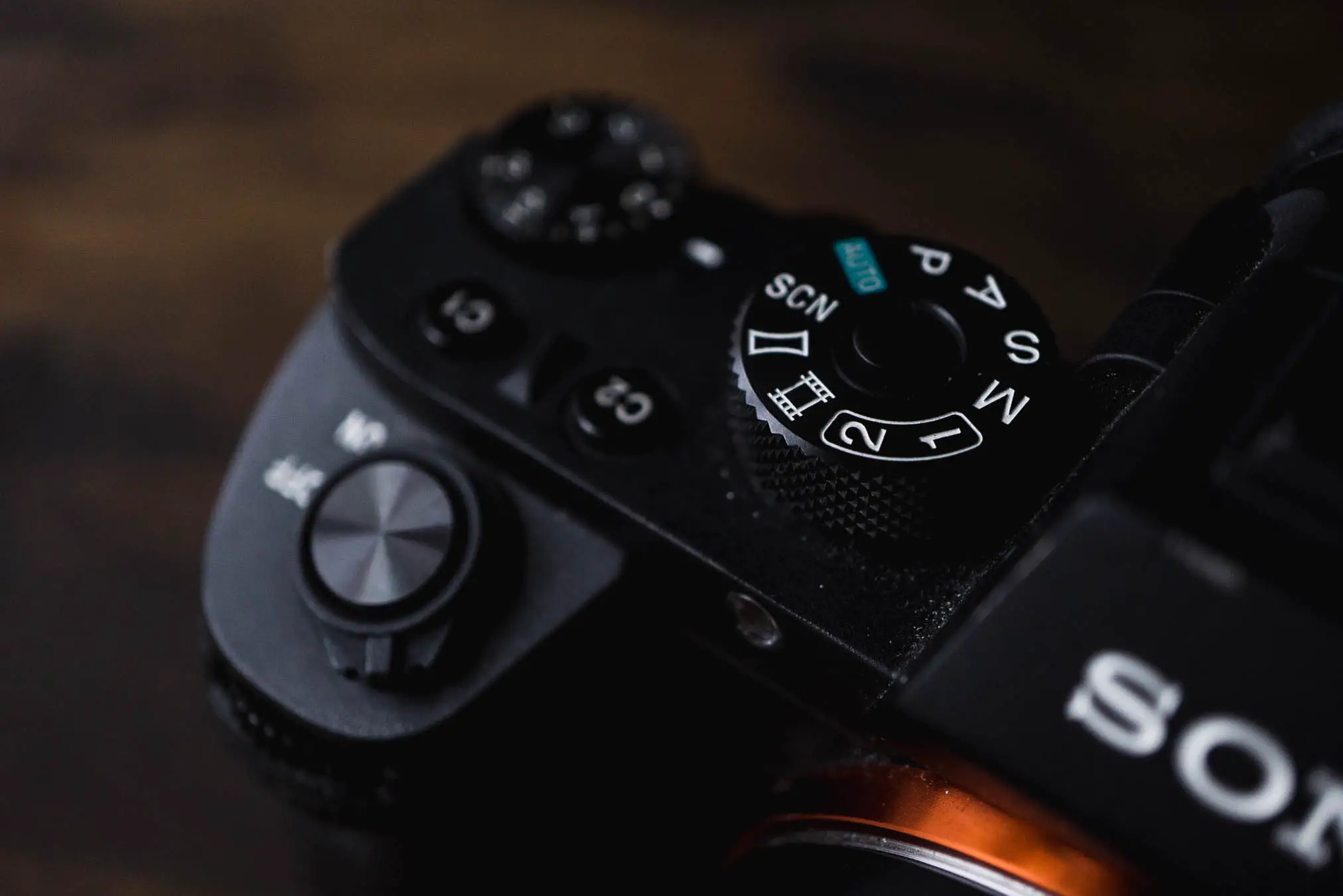
Mega-hyper-superfluousnessness
Unfortunately, this includes what I am going to call the “mega-hyper-superfluous”. Mega-hyper-superfluousness(ness) is a concept I have needlessly, unnecessarily and undeniably quite stupidly invented to further and in greater depth describe the core principle on which these cameras are designed and were created (incidentally, it’s impossible to describe mega-hyper-superfluousness(ness) without being needlessly verbose!)
I’ve talked about this countless times on this blog, it’s something I usually describe a “complicated down design”. As I’ve alluded to, the idea of this design approach is basically to make a thing that does all of the things that a thing of its type could possibly need to do – almost regardless of whether or not these things will ever be used. Whilst there are a lot of features in this camera that feel like this to me, there is one that really quite readily illustrates my point:
Automatic autofocus
The Sony A7rii has a mode called “automatic autofocus” – and no it’s not the 1st of April. Even the name for it is ridiculous. Fortunately for me, the use of the same word twice, just goes to support my point about hyper-mega-superfluousnessness…
Automatic autofocus is a mode that is designed to make the decision for you as to whether or not you want the camera to single-shot autofocus or continuous autofocus. Now I don’t swear often on this blog – and that’s despite basically being a potty mouth in real life – but seriously now, what the fuck…? What possible use is this? Is it for people who don’t know what type of autofocus they need and when? If so why are they spending £3k on a camera? Or is it for people who are too lazy to switch between the two modes? Or something else I can’t fathom?
I’ve probably taken half a million photos in my career so far, maybe more. I’ve even shot motorsports and newly-wed couples being showered in confetti as they walk toward me. Both these types of shooting situations, and no doubt a few more have led me to decide continuous AF is worth a try, but really it’s only been of debatable use to me. I’m also very quick to switch it off after as with more static subjects it tends to do more harm than good. So what and how is this AAF going to bring to the table? The crazy thing is, the one time I did use it I’d switched it on by accident, and it didn’t work. Missed focus shots made me go delving into the menu to find out if I’d set something wrong…
In my mind, the only real function this Automatic AF has is to attract the dads who want to know they have all the functions under the sun, and possibly those who lack the technique or understanding to know better.
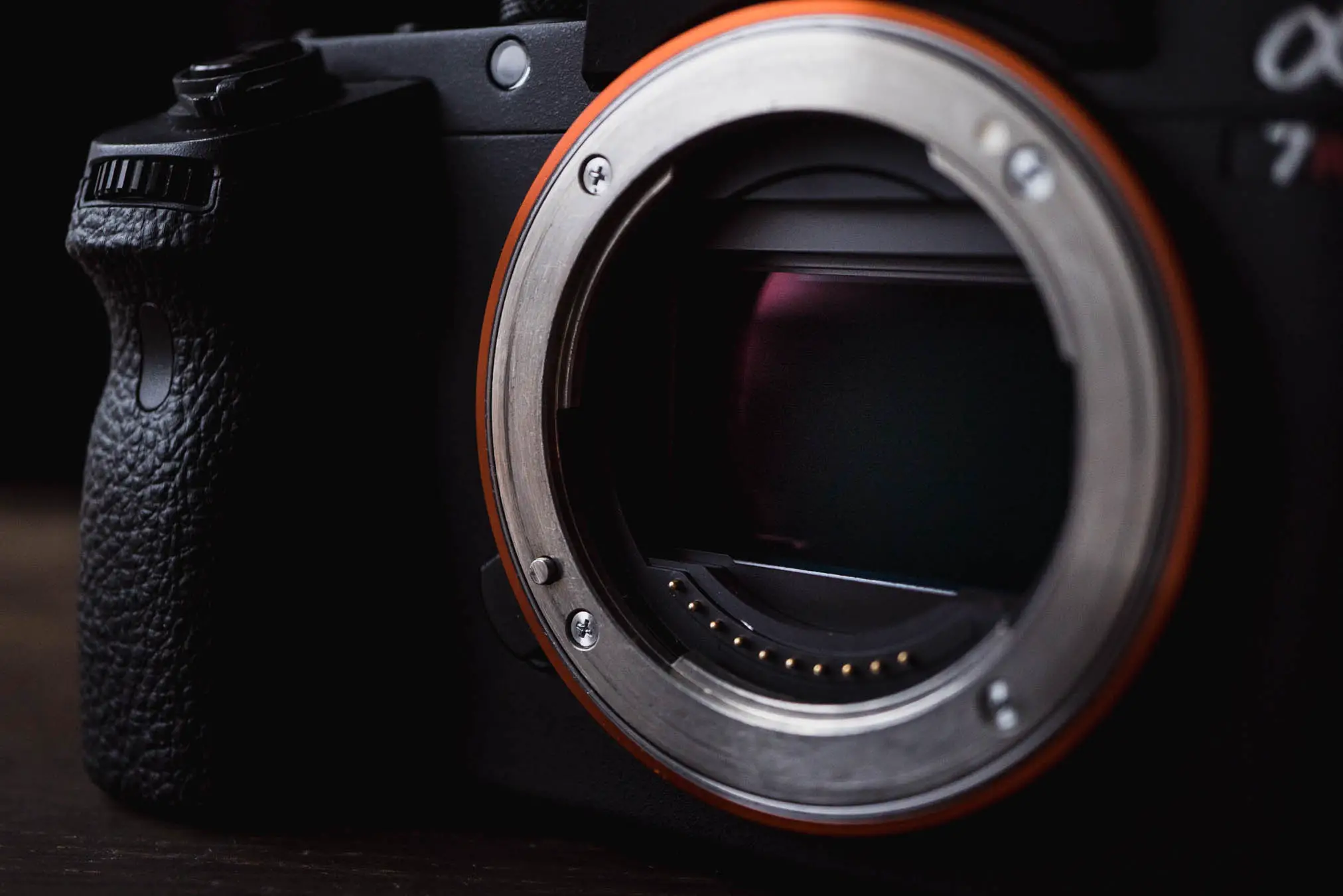
A Video camera?
What’s really mind boggling is that once you’ve grasped this over complication in terms of its attractiveness to the lowest common denominator, it’s also designed to be attractive to the video professional. As I mentioned earlier in the post the Sony A7Rii has in-camera 4k video, this alone is impressive really, but it also has “s-log2” picture profile things and zebraing and a digital zoom and whole other video-majiggers that escape me a bit, but James our video guy at work gets way overexcited by.
Now, as much as I moan, I probably wouldn’t be without this video function now I have it. We’ve put together some really nice looking video using these cameras… but you should see my face when I’m trying to undo all the modes James sets after he’s finished with the camera… it’s simply phenomenal just how many options there are in this thing.
A lack of true purpose
This all translates into a camera that to shoot it as a professional photographer feels a little like you’re shooting it against its will. It’s not that it wants to be a dad cam or a video camera, it’s just that it is both of these things and tries to be professional camera all at the same time too. Unfortunately, it’s through this over specification that I would and could never describe the Sony A7Rii as a professional spec tool. A professional camera works with you and aid your approach! This thing does almost the opposite – and this is simply because it’s not possible for a gadget this small to provide all of this function properly.
Too small, and too many bucking futtons
I wrote a post for Ilford about this not so long ago. You can have a read of that post here, but the general gist of it is that the compound effect of over-automation and over-specification is a huge increase in buttons and complication of design. The problem the Sony faces is that at the same time as trying to be compact, it does so many things for so many different types of user there could never be enough buttons to properly accommodate all the functionality when combined with how people might like to use it all. The result is that it has 4 ‘c’ buttons that don’t have set functions, and an entire customisable ‘fn’ quick access sub-menu.
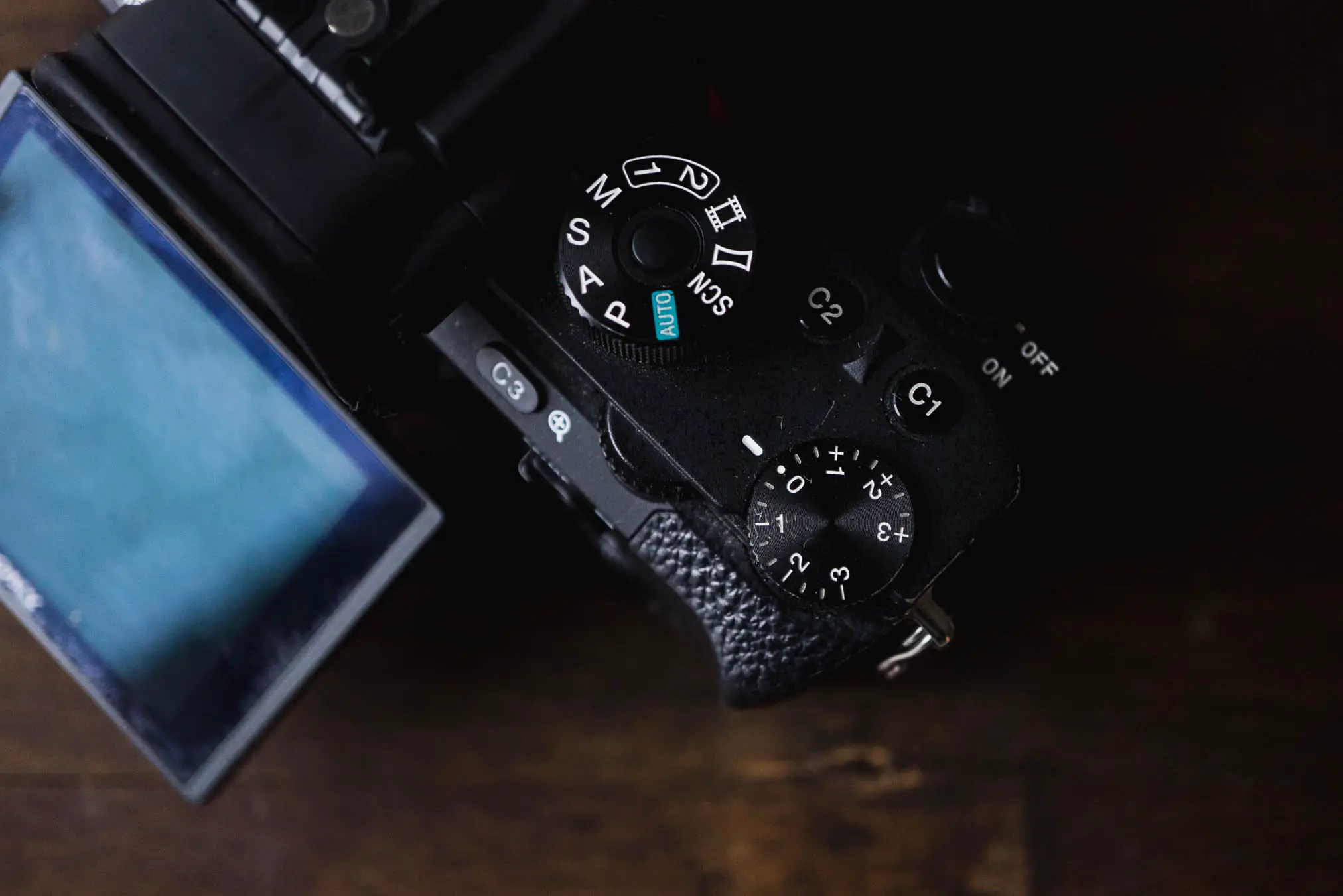
I look back at my Nikon days and remember the joys specific buttons for everything I felt like I needed. I suspect in fact, that my Nikon D3 had just as many buttons if not more than the Sony A7Rii. But alongside being big enough to accommodate them properly, the Nikon had features designed for people who knew what they were doing as professional photographers. As such, it was a professional camera for professional photographers and nothing more. Features like rear-button-AF and exposure lock buttons that were right there under you thumb gave a sense that as a professional photographer the D3 was designed for you. These were dedicated function buttons, with useful features that came easily to hand. Ok, I’ll admit, some did have slight customisation options, but at least they were labeled well and the variety of option available to each button made sense to the labelling of the button.
The Sony has buttons that are just labelled ‘C1’ ‘C2’ etc. and they just feel plonked wherever there is space on the body with seemingly little thought to ergonomics or what the button might actually be useful for given its position on the body of the camera. Of course, it’s hard not to admit that there’s a lot to be said for setting a camera up to work exactly how you like it, but in use, having unlabelled ‘C’ buttons remains confusing almost no matter how long you spend with a camera.
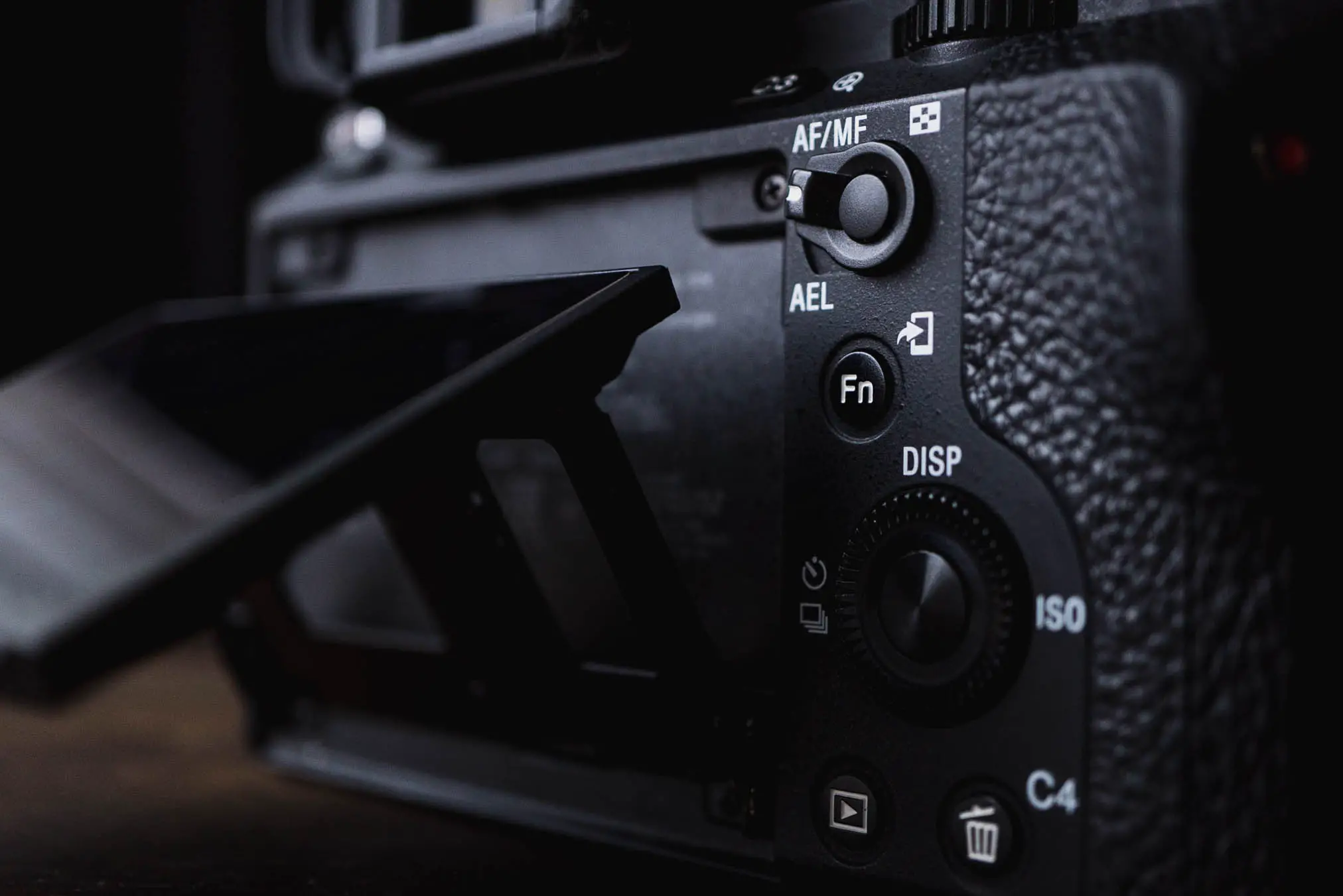
Non-assignable functions
What’s even more frustrating is that some of the functions can’t be assigned to ‘C’ buttons or the ‘Fn’ menu. Take for example the silent shooting mode or the mode that switches the viewfinder between showing the effect of the camera’s settings and just showing a bright picture, or the mode that stops the viewfinder switching to eye-level from the screen. All of these are buried deep in the menu, yet for me are settings I personally feel I need to access regularly. The customisable buttons and menu can be set some weird and wonderful things, but for some reason, not these three important-to-me functions, and there’s loads more that can’t be set too, loads! Where and why they drew this arbitrary line between what can and can’t be customised I have no idea, but it frustrates the hell out of me!
Missing features
And then finally, my last bugbear is the stuff that’s missing. Even my aforementioned 1994 Samsung ECX1 has a time lapse mode. Not the Sony A7Rii. Nope, instead you have to connect the camera to the Internet, access an App Store and download a time lapse app for £7.99. As if I haven’t paid enough? Ok, I’m sort of being facetious here – I know I can’t have it both ways. It can’t have just all the features I want and none of the others! But again, why and where was this arbitrary line drawn between what features were needed as part of this camera and those that would be downloadable costed optional extras. I mean for fuck’s sake, how is “automatic autofocus” more useful than an interval timer…?!? Again facetious; personally, I’d rather have neither mode cluttering my cameras menus, but the fact that this camera even inspires the question goes some way to emphasise the lunacy of it all.
Final thoughts (skip to the end…)
The Sony A7Rii can never be everything to everyone. No camera can. The problem is, it tries, and through its incredible effort to offer something for everyone, it feels like it’s purpose as just a simple camera is lost, or at very least highly diluted.
Of course, it’s not the only digital camera that suffers huge over complication of design. Even the few-year-old Nikon D3 that I praised by comparison earlier in the post is vastly over featured when compared to even the most complex of film cameras. For better or worse, camera tech is still largely speaking on a function-additive trajectory that is hard to see an end of in the current landscape of available gear.
Of course, there are exceptions to this. Fuji for example, make very intuitive cameras that are quite heavily focused on just being stills cameras. So why do I shoot a Sony and not a Fuji then? Quite simply, the Sony offers my company the best bang-for-buck. As a multidiscipline photographer who runs an agency that also offers video, the Sony A7Rii offers everything I need in one box. This of course pretty much rounds the circle of the love-hate dichotomy that I started this post with. The Sony A7Rii does all that I need it to do and way more, and by that merit its hard not to have a strong appreciation for it. But at the same time, it still manages to represent everything I dislike in modern camera equipment. It’s farcically overcomplicated, and entirely uninspiring to use. So much so, that I couldn’t even bring myself to use it in any meaningful way to populate this post with photos that haven’t been taken for work or as a job. In fact, it’s taken months for me to finally get around to finishing this post – I even found the damn thing massively uninspiring to write about…
So where does this leave me…? Well, in one sense trapped. I’ve invested in the system, it’s become the backbone of my photo/video services at F8, I have lenses for it that I love, and actually James and Janine who use it at work think it’s great. Of course, in another sense it’s actually inspired something positive in me… It partly inspired in me a greater appreciation for the ‘uncomplicated camera‘, which in turn helped me commit to the decision to buy a Leica M9, a camera I now use instead of the Sony A7rii as much as I can get away with!
Share this post:
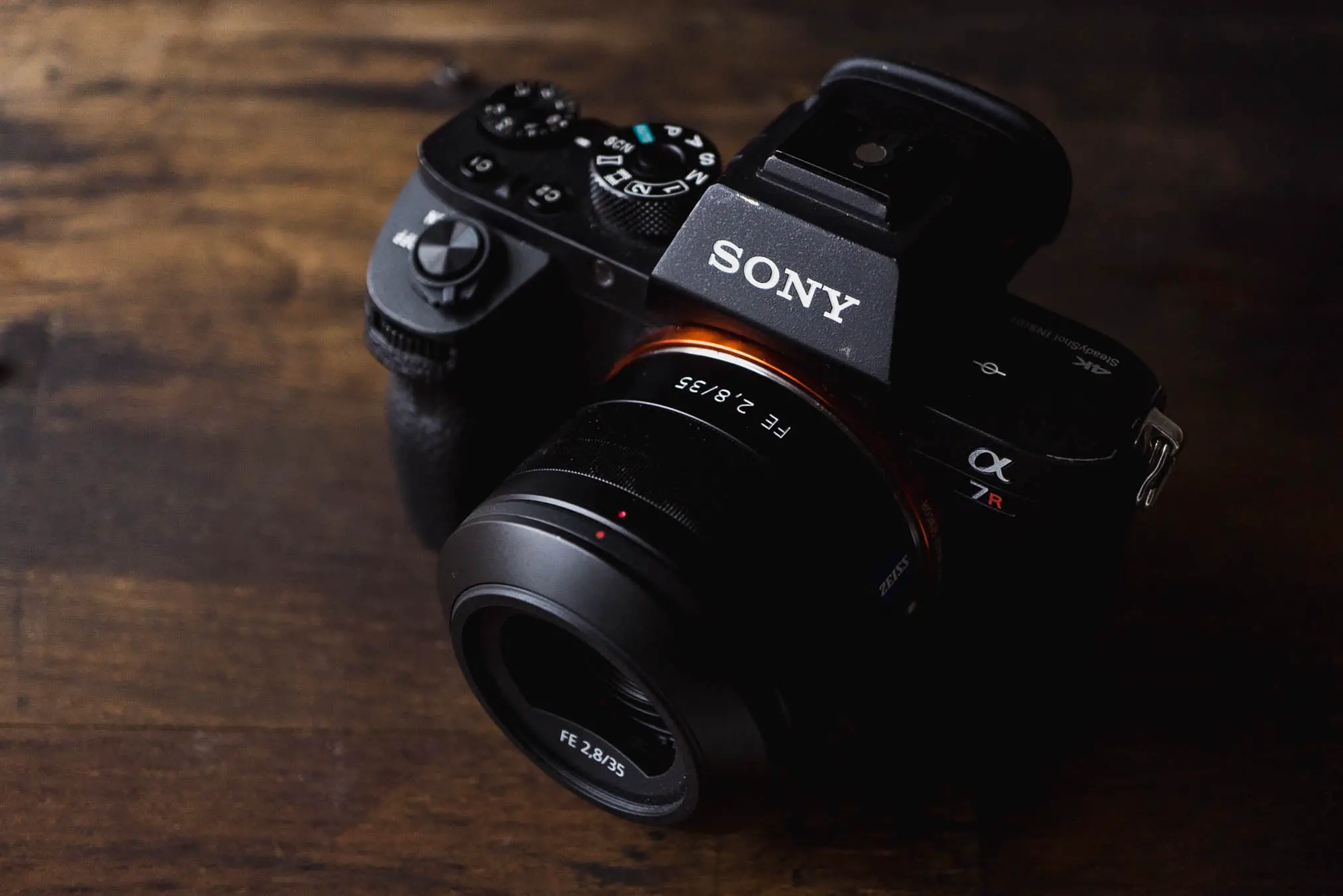
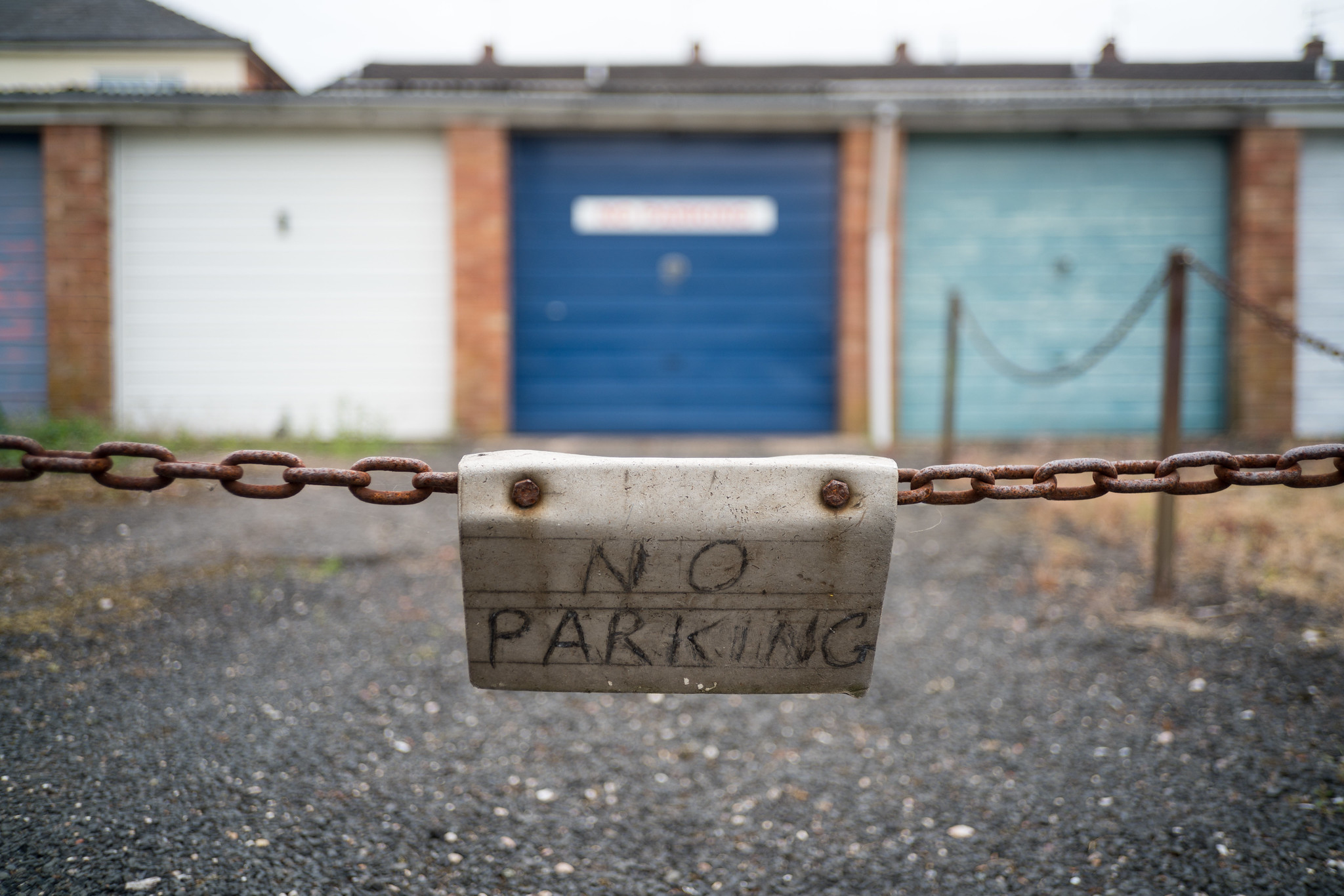








Comments
Hank on Sony A7Rii review – A superb farce of a camera
Comment posted: 16/01/2017
So I put the A7ii away again, and wonder why I still keep it.
(It's up for sale again)
Comment posted: 16/01/2017
Comment posted: 16/01/2017
Comment posted: 16/01/2017
Comment posted: 16/01/2017
Comment posted: 16/01/2017
Comment posted: 16/01/2017
Comment posted: 16/01/2017
Comment posted: 16/01/2017
Comment posted: 16/01/2017
Comment posted: 16/01/2017
Comment posted: 16/01/2017
Comment posted: 16/01/2017
Comment posted: 16/01/2017
Comment posted: 16/01/2017
Comment posted: 16/01/2017
Comment posted: 16/01/2017
Neil Woodman on Sony A7Rii review – A superb farce of a camera
Comment posted: 16/01/2017
The reason I do shoot with it though is the quality of the files and the lenses are wonderfully sharp, and importantly it's full frame, which is something I wanted. Sony have to be applauded for this, for offering a full frame mirrorless camera which is actually quite affordable, and the fact it's 35mm is why I keep using it. That and the fact you can mount practically any lens on it with an adapter and it works great. With something like the voigtlander VM-E you can use M mount lenses and focus closer than 70cm, which is also pretty amazing.
It's just hopefully going to be only a matter of time before other manufacturers catch on.
Comment posted: 16/01/2017
Comment posted: 16/01/2017
Comment posted: 16/01/2017
Comment posted: 16/01/2017
Comment posted: 16/01/2017
Comment posted: 16/01/2017
Toby Brownson on Sony A7Rii review – A superb farce of a camera
Comment posted: 16/01/2017
I agree with the frustrations of not switching that bloody screen off, though thankfully a 3rd party eye piece has made the eye (chest, hand or anything remotely close) viewfinder sensor less sensitive. Battery life is appalling, worse when using apps (sky hdr is fab) the rest not so fab.
I usually shoot manual lenses in AP and have recently discovered that if I set the EV compensation to the unused front or rear dial, the actual compensation dial to 0 and fix the ISO to whatever the circumstances demand, then that assigned EV dial has 5ev not the usual 3ev compensation either way. I prefer this over having auto ISO. I feel it at least gives me control back...essentially it functions as a shutter speed dial.
I also wonder, given what you said about down sizing your images for you clients, if maybe you could have saved a few quid with an A7ii as apposed to the A7rii!?
Thanks again for your blog and reviews.....Oh any chance of reviewing something a little cheaper....(not nasty). Something in between Leica and canny camera territory.
Cheers
Comment posted: 16/01/2017
Anthony Polson on Sony A7Rii review – A superb farce of a camera
Comment posted: 16/01/2017
Like you I moved to Sony from a Nikon D800. I still have it, it's just so predictable and reliable. But my Sony A7II can take my Leica M lenses, which the D800 cannot. So my A7II is my go-to camera with a Leica M9 for the simple camera experience.
My first Sony mirrorless was the A7. I struggled with it on assignment in Venice, shooting fashion. The autofocus wasn't just slow, it was non-existent. I shot far too many out of focus images. The A7II is much better.
I think the reason why the A7 series is so strange to former DSLR users is that Sony's mirrorless design team has no DSLR experience. When Sony took over the Minolta range of DSLRs, the Minolta design team moved across but they have been confined to designing Sony DSLRs and (D)SLTs. There is apparently no cross-fertilisation of ideas between the two design teams.
This is a real pity, because the Sony Alpha DSLRs and (D)SLTs are an easy switch from Nikon or Canon. In contrast, the A7 mirrorless series is somewhat alien. I think that's because the NEX/A7 design team learnt its trade with cameras like the DSC-F717 and F828, feature-rich consumer cameras designed for the enthusiastic amateur (no professional worth their salt would ever have used one). The problem is that the A7 series was designed by people with the same mindset, in fact mostly the same people.
The A7 series is feature-rich to the point of massive over-complication, but its USP for the pro shooter is its magnificent all-round performance and (especially) the sublime image quality. That's why my A7II is always my first choice.
But it's a love/hate relationship. Love the performance, hate the interface!
Comment posted: 16/01/2017
Comment posted: 16/01/2017
Comment posted: 16/01/2017
Mark on Sony A7Rii review – A superb farce of a camera
Comment posted: 16/01/2017
Comment posted: 16/01/2017
Tyler P. on Sony A7Rii review – A superb farce of a camera
Comment posted: 17/01/2017
It's your admission, whether you meant it or not, that you "love to hate" this camera, and "hate to love it." Which, essentially means, you have nothing but hate for it. There doesn't appear to be any yin to the yang, so why invest time reading a one-sided opinion. The internet is full of nothing but.
Comment posted: 17/01/2017
Rod on Sony A7Rii review – A superb farce of a camera
Comment posted: 17/01/2017
Comment posted: 17/01/2017
Aivaras on Sony A7Rii review – A superb farce of a camera
Comment posted: 17/01/2017
I found a way to keep Sony a bit more inspiring and shoot less in “cheating lazy auto mode” – I use only manual focus lenses with aperture ring, this way I still maintain quite good control and haptics, at least for my left hand. :) Luckily I'm hobby shooter, not pro, so I don't have to be very fast and I can get away without autofocus.
But even that doesn’t make this camera as entertaining as it could be because of mentioned in article messy controls, responsiveness and too clean and to perfect files. At the moment I’m getting ready to revive usage of my A7RII – will equip myself with few old imperfect soviet lenses and Mastin labs film emulation presets - well see if I’ll be able to downgrade picture perfection up to my taste and bring excitement back.
Anyway- I think somebody should do evf equipment full frame camera orientated to stills without all those bells and whistles.
Comment posted: 17/01/2017
kristoffer paulsen on Sony A7Rii review – A superb farce of a camera
Comment posted: 17/01/2017
Also, more and more I've been having trouble with shitty Canon lens quality control.. the 50mm L 1.2 I used to own literally could not autofocus. Amazing.
I'm constantly blown away by how incredible the Zeiss lenses are.. The 55 1.8 is one of the sharpest lenses I think I've ever used. It's insane. The 85mm is unbelievable. The 25 is SO sharp. The 35, too.. And it fits in your pocket (if you've got a big pocket). The camera has been working well with my existing Canon lenses.. The 17mm TSE talks well to it, as does the 70-200. Even the 24-70 seems to be fine.. (All via the Sigma adaptor).
The latitude of the files is fantastic.. What Capture One is capable of pulling from ARW files simple rules. The art stuff that I shoot now with it is just incredible. Printed huge, the detail is stunning. Absolutely gorgeous.
However, the whole thing feels a bit like driving a Mini with a V8. There's so much power, but the camera just doesn't seem to be able to keep up with itself. Comparing it to driving some boring old sedan, (i.e. a Canon DSLR), which might not be as cool or fun, it'll get you there, it's reassuring, and you just know what it's going to do.
My biggest problems with it are manual focus by wire (i hate it, and can never really get it to do what i want, especially when focussing in low light) and the fact that I bumped the USB port the other day, and now it's constantly malfunctioning, and has to go back to get repaired (which will take a MONTH). Also, the USB port is USB 2. For a camera that produces 42mp files.. A tremendous oversight. The buffer is so slow.. Even if they made uncompressed RAW available, it's useless, as it makes the camera even slower than it already is.
It's such a bummer, almost perfect. It'll be interesting to see what they do next.
Comment posted: 17/01/2017
Comment posted: 17/01/2017
Comment posted: 17/01/2017
George Appletree on Sony A7Rii review – A superb farce of a camera
Comment posted: 17/01/2017
I never was a professional photographer. But that makes me question about resolution.
I like my medium format negatives. But not often made from them really big prints.
Comment posted: 17/01/2017
Comment posted: 17/01/2017
Comment posted: 17/01/2017
Comment posted: 17/01/2017
Francis.R on Sony A7Rii review – A superb farce of a camera
Comment posted: 17/01/2017
I had a Canon EF (got stolen with the Sony R1) camera but I couldn't make it work, although the shutter sound was disturbing to me, so I got a Samsung ECX-1 and although it requires to read the manual to makes it do what I want actually I have much more fun than with the Canon... but to know if I am actually focused encouraged me to buy another film camera: a Canon Eos 7 (elan 7ne/ 33v) and I am loving it, it's almost as invisible as the Sony R1 (almost)
To replace my stolen Sony R1 I tried in a store a fujifilm x30 and a Sony RX100. The former was similar to the Fujifilm X-e1 with a fujinon 35mm f1.4 I had a time, although it resembles a film camera it was by far the most digital (in a bad way) I've ever used, I needed always to go to menus (sometimes seemed I needed more clickes than with the Samsung ECX-1) never letting me forget I am using a camera instead of justing grabbing what I was seeing, something that never happened with the Sony R1; and the Sony RX100, well, it was similar to the Sony a5000 I had also a time, a camera that I could never feel like a camera, more like a kind of cell phone with bloatware and yet I think they had the defect of my Sony R1, the colors need work. So I ended purchasing a simpler Sigma DP2 (the original one of 4 mega pixels) this because it's complicated to buy batteries to the R1, and it was a bit big and problematic to run software able to open the raw files. The Sigma is nice but it lacks a screen as the top mounted in the Sony R1 (feels like medium format a bit and I used it this way to street and gardens) but outside that to me it's fine and enough to just take photographs.
I think it's a curse these advances in processing that makes cameras far more complicated than needed and lenses relying in digital corrections than in true optics properties.
Comment posted: 17/01/2017
Ray on Sony A7Rii review – A superb farce of a camera
Comment posted: 17/01/2017
Comment posted: 17/01/2017
Andy on Sony A7Rii review – A superb farce of a camera
Comment posted: 17/01/2017
Comment posted: 17/01/2017
Zorton on Sony A7Rii review – A superb farce of a camera
Comment posted: 18/01/2017
I have been searching for a non nonsense digital camera for quite some time and I thought one of these Sonys might just be the winner but now I don't think so.
I'm coming from owning an M6, which I have a love-hate relationship with (I'd prefer an M7), a MjuII, Pentax MV and Ricoh GRDII. From that list I'm sure you can tell that I prefer -as much of us do- uncomplicated cameras.
What would you recommend outside of Leica digi M territory? I can't justify that level of investment right now. The Ricoh is an amazing bit of kit but a bit more oomph would be lovely!
Comment posted: 18/01/2017
Dan James on Sony A7Rii review – A superb farce of a camera
Comment posted: 18/01/2017
I'm debating getting a used DLSR to use my vintage M42 and C/Y lenses with (I already have a NEX3 for the same, but want something with a VF and better handling), and am seeking that balance between capable vs overcomplicated, a camera vs a gadget, versatile for my needs yet invisible in use...
Comment posted: 18/01/2017
Comment posted: 18/01/2017
Comment posted: 18/01/2017
Comment posted: 18/01/2017
Comment posted: 18/01/2017
Comment posted: 18/01/2017
Comment posted: 18/01/2017
Comment posted: 18/01/2017
Comment posted: 18/01/2017
Comment posted: 18/01/2017
Neil Woodman on Sony A7Rii review – A superb farce of a camera
Comment posted: 18/01/2017
Comment posted: 18/01/2017
Comment posted: 18/01/2017
Comment posted: 18/01/2017
Comment posted: 18/01/2017
Comment posted: 18/01/2017
Aivaras on Sony A7Rii review – A superb farce of a camera
Comment posted: 19/01/2017
Leica has some attractive sides, but as I'm details and nature man - there are two aspects that are stop for me - close focus ability and low angle shots. And, off course, leica's astrophysics of pricing.
What I'm trying to tell here that even without those bells and whistles Sony A7 is still right sized and practically versatile camera.
Now there is one more small step for sony to take - take off those fcuking bels and annoying bling whistles. :)
But I afraid that its not the way of sony unless they decide to make niche model targeted at leica market. And they could. And they should. :)
Comment posted: 19/01/2017
Comment posted: 19/01/2017
Comment posted: 19/01/2017
Comment posted: 19/01/2017
Comment posted: 19/01/2017
JOSE CANEDA on Sony A7Rii review – A superb farce of a camera
Comment posted: 19/01/2017
Thank you for that, and the article of course!
Comment posted: 19/01/2017
George Appletree on Sony A7Rii review – A superb farce of a camera
Comment posted: 19/01/2017
JOHN LOCKWOOD on Sony A7Rii review – A superb farce of a camera
Comment posted: 19/01/2017
Comment posted: 19/01/2017
Comment posted: 19/01/2017
Chris Casterline on Sony A7Rii review – A superb farce of a camera
Comment posted: 20/01/2017
Comment posted: 20/01/2017
Mike Hunt on Sony A7Rii review – A superb farce of a camera
Comment posted: 21/01/2017
What's wrong with you? You're all over the place.
I moved from Nikon (D800) to the a7 series a few years ago, and never looked back.
The a7rii is currently the pinnacle in cameras right now. It does everything you need, and more, but you see this as a negative? Ridiculous.
M
Comment posted: 21/01/2017
Comment posted: 21/01/2017
Comment posted: 21/01/2017
Comment posted: 21/01/2017
Comment posted: 21/01/2017
Comment posted: 21/01/2017
Comment posted: 21/01/2017
JT__Photography on Sony A7Rii review – A superb farce of a camera
Comment posted: 21/01/2017
Comment posted: 21/01/2017
Rodrigo on Sony A7Rii review – A superb farce of a camera
Comment posted: 21/01/2017
I'm about to buy an A7II o A7RII, so maybe not the review I wanted, but I think you express more of a personal frustation that just dissing the camera.
In car terms it's a Subaru Outback, it does everything you can possibly need in a car, and more, but when you see a twisty bit or road...it's not the car you want.
Extra marks for no walls pics, no charts, no f-series, no "look at the last 100 pixels of the bottom left-hand corner while shooting into the sun with a decentered lens", no; it comes from your heart or maybe gut? (Here in Perú we'd say "un poco de hígado" [a bit of liver] when you're angry])
The crazy thing is that, after buying the A7(R)II I want a film camera, mostly to remember the photogrphs I took as a kid and also because it's a completely different feel, not better, possibly (being obejtctive) worse in almost every sense, but maybe like eating that street-vendor mystery-meat shawarma: it's goooood.
Comment posted: 21/01/2017
Comment posted: 21/01/2017
Comment posted: 21/01/2017
Comment posted: 21/01/2017
Derren Lee Poole on Sony A7Rii review – A superb farce of a camera
Comment posted: 24/01/2017
Comment posted: 24/01/2017
Comment posted: 24/01/2017
Kodachromeguy on Sony A7Rii review – A superb farce of a camera
Comment posted: 28/01/2017
Comment posted: 28/01/2017
Ken Hindle-May on Sony A7Rii review – A superb farce of a camera
Comment posted: 03/02/2017
I shoot digital much in the way you describe, setting auto ISO with a minimum shutter speed. I concentrate on framing, composition and timing and let the camera handle the rest unless I want a particularly large or small aperture. I actually view it as a positive, as I'm focusing on what will make the best image and can trust the camera to handle the minutiae. It's not as if I don't get enough practice of that when shooting film. There's a tendency among certain photographers to view shooting in manual as a mark of competence, but really I think the skill is in knowing when you can trust the camera and when you need to step in. With the Fuji though, that's practically never. It just doesn't seem to get caught out and that is one of a number of things that add up to make it quite a different experience to shooting my old Canon DSLR. That camera wasn't that clever. It did need continuous adjustment, and the combination of snappy autofocus and design that favours ergonomics over compactness meant that it felt much more a part of me than the Fuji does. I take better shots with the Fuji though, and I wonder whether that's because it's forcing/enabling me to concentrate on the things that actually make a better shot (like film does). Or I could just be getting better, who knows.
I read an interesting article recently by Q. Oliver about his journey from Sony to Fuji to Leica, which raised some of the same points. He found the Sony a great workhorse, but the images a bit too clinical. He loved the images from the Fuji...until the sun went down. Although technically 'ISO-less', things end up a bit too flat if you have to push the Fuji files very far. The Leica was an improvement...but I felt like he was trying a bit too hard to justify how much it cost!
I think your point about Sony making the most sense commercially is a sound one, too. I know a few videographers and the hobbyists shoot with Canons or Nikons, but all the pros use Sony. Not sure why exactly, but they just seem to be more cost-effective and better workhorses. Fuji works for me because I don't often shoot things that move and I almost never shoot video (amusingly, the one time I did my elderly Macbook wasn't actually capable of playing it smoothly). You need a system's compromises to fit around the kind of work you do and so true generalists will either need to go full frame Canikon, or Sony for something a bit more compact.
Comment posted: 03/02/2017
Evan Bedford on Sony A7Rii review – A superb farce of a camera
Comment posted: 05/02/2017
Comment posted: 05/02/2017
James Gifford-Mead on Sony A7Rii review – A superb farce of a camera
Comment posted: 07/02/2017
Comment posted: 07/02/2017
Mus on Sony A7Rii review – A superb farce of a camera
Comment posted: 24/02/2017
r_kt on Sony A7Rii review – A superb farce of a camera
Comment posted: 25/02/2017
Comment posted: 25/02/2017
Pjc on Sony A7Rii review – A superb farce of a camera
Comment posted: 25/02/2017
I suggest the root issue has more to do with that the more technically competent photographers are more aware their market advantage are slowly disapaiting. Companies - like Sony - have reduced the technical mystery of photography and flatten the differentials, which have existed amongst the likes of Canon, Leica and Nikon. I imagine to a 'professional' - technical admiration of the new mixed with sadness at technical skill erosion has got to expose mixed emotions.
'Dads' can now take photo's using one of these 'modern' cameras which may be indistingusable from any hardened professionals offering. The reason I suppose is that the 'creative eye' is not a technical competence it is a human right - an evolution of sensing and seeing.
Sony and their likes are simplifying the technology and making space for the 'creative eye' ........ and it may be worth noting - 'dads' have eyes too.
Comment posted: 25/02/2017
Joe on Sony A7Rii review – A superb farce of a camera
Comment posted: 05/03/2017
Comment posted: 05/03/2017
David Heintz on Sony A7Rii review – A superb farce of a camera
Comment posted: 17/03/2017
I also add the Sigma 50 ART, even though it is AF, but my Nikon 50 1.2 ais is pretty nifty...
Dmitriy on Sony A7Rii review – A superb farce of a camera
Comment posted: 19/03/2017
And by the way, you can assign Silent shutter to pretty much any customizable button out there. The scrolling list of assignable functions is so long, apparently you got tired scrolling it and decided instead to write this useless article.
Comment posted: 19/03/2017
Kevin Shorter on Sony A7Rii review – A superb farce of a camera
Comment posted: 26/03/2017
Ramble begins!
I confess to being an A7RII owner. Albeit an odd lot of one I’d bet. Yes, I did pay attention to some of the specifications and features you’ve expounded on as a basis of my purchase. I think 5 Axis Image Stabilization is the greatest photographic technology in, well, a long time (thank you Olympus!). And I see no downside to having a wonderful sensor with low noise and lots of nice pixels to it (not implying you do).
That said, I can easily see your ‘Dad Camera’ argument.
I’ll also weigh in to the A7RII being poor in some ways. A beautiful sensor in a candy wrapper of features with a boring exterior. I’ve got upwards of fifty cameras and well over a hundred lenses and the body, fit and feel of the A7RII is …. I’m searching for the right thought here. Well its plasticy (invented word), cheaply finished, feels a bit flimsy in ways, has some good controls that are oddly placed with some hard to use due to placement. It strikes me as a technical gizmo container that actually has very little photographic feng shui to it. It doesn’t endear you as a camera from a physical sense. Not something you just pick up and hold because of admiration of craft, beauty, or it just feels great in your hand. I’ve got some fine cameras that I do pick up just to hold at times. They call at me to do that.
So why is it I mostly shoot with the Sony A7RII? Well many of the lenses I own are quite old and I love exploring what each of these lenses can do. My thought has been what better way than to be able to mount them all on the same image sensor and then see what they can do, what I might do.
Despite all the features, my camera stays on M. I shoot very basically. Probably biased by the fact that I’m old and that’s the way I learned back in the mid Sixties. It’s also fair to say I have little knowledge of what all those features are down in the menu’s. I don’t go into the menu’s. Don’t use any of that stuff. I almost always shoot manual focus in manual exposure mode. I loved your comment on the EVF. Very quickly after starting to use the A7RII, I’ve fallen into a pattern of not looking at exposure values in the viewfinder or on the rear LCD. I don’t use EV compensation as many would shooting in auto modes. I just stay manual in M and bias up or down on the old school exposure triangle, ISO, aperture and shutter speed. I’ll generally pre-visualize the ISO, have aperture set on the front wheel and shutter speed set on the back wheel. EV just stays at 0. Those two wheels are fairly well located so I just bias up or down on those using a good knowledge of photographic rules (per desired visual results) and observing exposure with the EVF. The EVF itself is my meter and I can’t remember the last time I actually looked to see technically where exposure was sitting or -.
Of course it helps to have a very good understanding of not only photographic fundamentals, but also a good understanding of the technology within and the capabilities and latitude that it can render. One of those capabilities per the A7RII is BSI technology. It’s an interesting added feature for a large high end sensor, one that’s intrigued me to explore a bit. What’s it add, how does it manifest itself. So this past week I’ve spent a good bit of time looking at noise performance versus dynamic range on the A7RII. I ran a series of tests. I did this because a lot of practical use told me this camera has good dynamic range and low noise when applied properly, however the range of upper and lower headroom is not linear .. equal top and bottom. So I figured it’s because of the BSI backlighting and there may be points of best practice for noise as well as dynamic range.
BSI backlighting can be equated to the digital equivalent of flashing your film. With either one, there’s only so much headroom. All you are doing really is shifting the headroom up or down with backlighting or flashing. Of course you’re doing that shifting for a reason, and that’s either for noise improvement or preservation of lowlights. What I wanted to know was how much of that (backlighting) is at the cost of highlights. Cause adding backlighting can’t add dynamic range, it can only shift it, i.e. a well can only hold so much charge!
Some things pointed out by my testing. The A7RII is a somewhat ISO Variant camera. Usable dynamic range and noise vary per ISO (I guess this is a fairly prescient thought for most any digital camera though but there is subjectivity to 'usable'). Nothing like postulating the profound.
The A7RII does have non linear exposure latitude as suspected. At best it only has about 2 plus stops inching towards 2 ½ stops. However it has in my estimation over 5 stops lowlight headroom and at times I think it actually has another stop or two. Of course this is just from subjective viewing of test shots but to me, discounting noise, If I see all of the lowlight detail without clipping, then to me it has resolved at that exposure.
I believe formal claim is the A7RII has a 5 total stop exposure latitude. Per my testing I think it has a bit more, another stop or two at least given its latitude on the under exposure side (BSI here). And to this I say nice accomplishment Sony.
I have found the Sony A7RII to be a platform for me for capturing nice image results when taking into account a love for trying to keep many old lenses going and using them daily. The A7RII has a wide dynamic range with low noise and captures pretty good colorimetry. It’s gamut on Red could be a bit better but overall colors are pleasing and fairly natural. It’s tonal scale for a digital camera is very good, no actually the best I’ve encountered. Being an old tv video man (vision mixer in the UK) I learned years ago a strong image is predominately about the blacks. Most of the integrity of your image is in the bottom 5% of the tonal spectrum. So here too the A7RII is a plus (thank you BSI). It doesn’t matter how finely you build the three story house, if it’s on a bad foundation then everything is marginalized. The A7RII has the best image foundation of any digital camera I’ve observed.
I think this is where I’ll circle back and say I think I’m a very atypical user of an A7RII or probably most modern cameras. The camera has a world of features and yet I don’t use any of them. I’m not kidding when I say I don’t hardly know what’s in any of the menus. I don’t care what’s in the menus. I bought the A7RII to be this chunk that holds a state of the art high end sensor; and for being mirrorless so I can mount almost any lens ever made onto it and thus have a marvelous time exploring all of those lens capabilities. For me it’s a tool that enhances the historical preservation of image making by sustaining the use of many time honored old lenses.
Caveat to the above. I do use the Applications List menu so I can access the Smart Remote Control app for my Android device. I do many long exposures and bracketing on tripod so that is a menu function I’ve heavily relied upon.
In the end the A7RII is a hammer that I’m glad I’ve got in my kit. It’s not built as well as many of my hammers and has little sense of craft to it beyond leading edge sensor technology, BSI, 5 Axis Image Stabilization and a beautifully made Shutter. But to me it’s just a box to house those things. A box that’s not particularly well made physically or finished. I know I’ll be replacing it sometime in the near years with the next gen of box with the right new technology. But what a nice sensor! And combined with 5 Axis Image Stabilization and mirrorless mounting it gives me a wide span of image capabilities. And when I do want the feel of a craft camera, I'll shoot with one of my Leica's, Zeiss, Voigtländer, Nikon or Contax.
Ramble ends!
Comment posted: 26/03/2017
Comment posted: 26/03/2017
bob on Sony A7Rii review – A superb farce of a camera
Comment posted: 28/04/2017
My journey into the Leica world has me wishing that the Panasonic and Sony had such nice precise manual focus but maybe I'm not aware of what is out there.
Nice article. I felt a real connection with the battle going on.
Comment posted: 28/04/2017
Hallvard Østrem on Sony A7Rii review – A superb farce of a camera
Comment posted: 29/04/2017
However, I think your "lazyness" take on it is more than justified.
Comment posted: 29/04/2017
Comment posted: 29/04/2017
Comment posted: 29/04/2017
Neil Woodman on Sony A7Rii review – A superb farce of a camera
Comment posted: 03/05/2017
Comment posted: 03/05/2017
Justin on Sony A7Rii review – A superb farce of a camera
Comment posted: 03/06/2017
I might have the opportunity to upgrade to a full frame camera in the future. I'm currently using an a6000 and I highly enjoy it. I'm amateur for sure, but if the opportunity arises to get a full frame...I understand enough to know I need to do this (that and your comment above on the APS-C sensor size). That said: for a hobbyist/amateur/aspiring/budding/wannabeanawesome picture taker in the future, it appears that the frustration/love with the a7RII is high in this article, and scares me a bit about making the wrong purchase. So questions follow:
What Sony full frame camera would you recommend if you think the a7RII is "too much of a thing" and I'm currently rocking the a6000?
Would you consider your comments preferential in nature? Or do they seem to reflect the opinions of those you know with the a7RII?
If I were to buy this camera, do you truly feel it would be something I would come to regret given I develop my skill over time? Or does that completely depend on the preferences of the photographer?
Comment posted: 03/06/2017
João Medeiros on Sony A7Rii review – A superb farce of a camera
Comment posted: 04/06/2017
"What’s even more frustrating is that some of the functions can’t be assigned to ‘C’ buttons or the ‘Fn’ menu. Take for example the silent shooting mode or the mode that switches the viewfinder between showing the effect of the camera’s settings and just showing a bright picture, or the mode that stops the viewfinder switching to eye-level from the screen."
have you tried to assign the monitor/viewfinder to C1 and the silent shooting to C2 while having AF/MF to magnify? It works for me in my work and still have C3, FN, Trash button assigned to other things.
Best wishes
João de Medeiros
Comment posted: 04/06/2017
dsvg on Sony A7Rii review – A superb farce of a camera
Comment posted: 12/06/2017
Comment posted: 12/06/2017
Ricardo Mejia on Sony A7Rii review – A superb farce of a camera
Comment posted: 12/06/2017
Comment posted: 12/06/2017
Comment posted: 12/06/2017
Comment posted: 12/06/2017
Comment posted: 12/06/2017
Comment posted: 12/06/2017
Ricardo Mejia on Sony A7Rii review – A superb farce of a camera
Comment posted: 28/06/2017
I waited to pass judgment on the focusing issue until I had used purpose built lenses. A friend who went all in with Sony said he's experienced the same issue.
The other issue I have with Sony zoom lenses is that the zoom is opposite Canon. With Canon you twist right to zoom out, and twist left to zoom in. Sony is opposite. When you have 90 seconds to photograph up to 8 couples on the floor, muscle memory is very important as I'm instinctively zooming in and out as I pan around the floor. I found myself losing shots because I had zoomed the wrong way. This is a personal issue that would resolve itself over time, but as there is no way to "practice" this I will stick to Canon lenses even if I don't dump the Sony as I've been tempted to do several times.
Comment posted: 28/06/2017
Comment posted: 28/06/2017
Mike Casson on Sony A7Rii review – A superb farce of a camera
Comment posted: 12/08/2017
FWIW, you can absolutely program silent mode to the Fn menu. Mine is set that way now. Any after firmware 4.0 (I think?) there is an option to set "shot preview" to one of the custom buttons if you prefer to have shot result turned off. Also, I have C2 set to switch between EVF and LCD-solves the issue with the IMO overly sensitive eye sensor in the EVF.
That said, I found your take on the a7rII honest and a reflection of your own personal experience with it. It's ok for me or anyone else to agree or disagree-I don't find your criticisms of Sony's product to be a personal assault toward me. ;)
Best,
Mike
Comment posted: 12/08/2017
Steven Nils on Sony A7Rii review – A superb farce of a camera
Comment posted: 18/08/2017
People go on about the dreadful A7 menu but the reality is, 90% of the functions are no interest to me and I ignore them. I generally use it is aperture priority and auto ISO up to 25,000 but at that level the image quality really starts to suffer. Or, depending on ambient light, I set the shutter speed and let the auto ISO do the rest.
I like it's size and with the little M mount lenses it is pretty discreet. For me it's a keeper for the specific photography I use it for. All other photography I use Sigma cameras ;) They are, without doubt, a subject of their own!
Comment posted: 18/08/2017
Comment posted: 18/08/2017
Comment posted: 18/08/2017
Micah J. Turner on Sony A7Rii review – A superb farce of a camera
Comment posted: 28/08/2017
Been thinking of switching cameras. The A7S is nice, but 99% of the time all that low light capability is wasted. Was thinking of getting a Nikon F2 or other legacy nikon film camera and learn to shoot film... or an a7rii or a7iii when it comes out, or a D850.
Any recommendations from that bunch?
Comment posted: 28/08/2017
Erik on Sony A7Rii review – A superb farce of a camera
Comment posted: 19/11/2017
Comment posted: 19/11/2017
Scot on Sony A7Rii review – A superb farce of a camera
Comment posted: 26/11/2017
Damon Meister on Sony A7Rii review – A superb farce of a camera
Comment posted: 02/12/2017
The Leica M9 - Rediscovering a Joy in Digital Photography - 35mmc on Sony A7Rii review – A superb farce of a camera
Comment posted: 31/12/2017
Peter Harris on Sony A7Rii review – A superb farce of a camera
Comment posted: 07/02/2018
Comment posted: 07/02/2018
Mark Cox on Sony A7Rii review – A superb farce of a camera
Comment posted: 12/03/2018
Comment posted: 12/03/2018
Tony Blatcher on Sony A7Rii review – A superb farce of a camera
Comment posted: 01/05/2018
Flavio Colker on Sony A7Rii review – A superb farce of a camera
Comment posted: 28/12/2018
Those cameras also offered Leica a new life. Leica is making cameras that go the opposite direction: they take away functions. The less functions the more expensive Leica cameras are. They reenact the solid brass feel, turn off digital bureaucracy and charge a fortune. In the 70s, in the glory days of creative photography and good photogear, that mentality would have them bankrupt in 6 months. Now, since camera design is happy at being foolish, Leica thrives.
Gary on Sony A7Rii review – A superb farce of a camera
Comment posted: 09/02/2019
Seriously kill yourself,
Gary
Comment posted: 09/02/2019
Mark on Sony A7Rii review – A superb farce of a camera
Comment posted: 25/08/2019
Comment posted: 25/08/2019
Tom on Sony A7Rii review – A superb farce of a camera
Comment posted: 25/01/2020
Comment posted: 25/01/2020
Steve on Sony A7Rii review – A superb farce of a camera
Comment posted: 08/04/2024
Comment posted: 08/04/2024